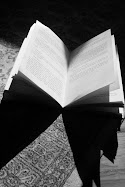Mostrar mensagens com a etiqueta Nicole Kidman. Mostrar todas as mensagens
Mostrar mensagens com a etiqueta Nicole Kidman. Mostrar todas as mensagens
segunda-feira, 21 de outubro de 2013
segunda-feira, 25 de junho de 2012
sábado, 9 de julho de 2011
Virginia's Farewell Letter to Her Husband
Virginia Woolf (1882-1941) was an English novelist, essayist, biographer, and feminist. Woolf was a prolific writer, whose modernist style changed with each new novel.[1] Her letters and memoirs reveal glimpses of Woolf at the center of English literary culture during the Bloomsbury era. Woolf represents a historical moment when art was integrated into society, as T.S. Eliot describes in his obituary for Virginia. “Without Virginia Woolf at the center of it, it would have remained formless or marginal…With the death of Virginia Woolf, a whole pattern of culture is broken.”[2]
Virginia Adeline Stephen was the third child of Leslie Stephen, a Victorian man of letters, and Julia Duckworth. The Stephen family lived at Hyde Park Gate in Kensington, a respectable English middle class neighborhood. While her brothers Thoby and Adrian were sent to Cambridge, Virginia was educated by private tutors and copiously read from her father’s vast library of literary classics. She later resented the degradation of women in a patriarchal society, rebuking her own father for automatically sending her brothers to schools and university, while she was never offered a formal education.[3] Woolf’s Victorian upbringing would later influence her decision to participate in the Bloomsbury circle, noted for their original ideas and unorthodox relationships. As biographer Hermione Lee argues “Woolf was a ‘modern’. But she was also a late Victorian. The Victorian family past filled her fiction, shaped her political analyses of society and underlay the behaviour of her social group.”[4]
Mental Illness
In May 1895, Virginia’s mother died from rheumatic fever. Her unexpected and tragic death caused Virginia to have a mental breakdown at age 13. A second severe breakdown followed the death of her father, Leslie Stephen, in 1904. During this time, Virginia first attempted suicide and was institutionalized. According to nephew and biographer Quentin Bell, “All that summer she was mad.”[5] The death of her close brother Thoby Stephen, from typhoid fever in November 1906 had a similar effect on Woolf, to such a degree that he would later be re-imagined as Jacob in her first experimental novel Jacob’s Room and later as Percival in The Waves. These were the first of her many mental collapses that would sporadically occur throughout her life, until her suicide in March 1941.
Though Woolf’s mental illness was periodic and recurrent, as Lee explains, she “was a sane woman who had an illness.”[6] Her “madness” was provoked by life-altering events, notably family deaths, her marriage, or the publication of a novel. According to Lee, Woolf’s symptoms conform to the profile of a manic-depressive illness, or bipolar disorder. Leonard, her dedicated lifelong companion, documented her illness with scrupulousness. He categorized her breakdowns into two distinct stages:
“In the manic stage she was extremely excited; the mind race; she talked volubly and, at the height of the attach, incoherently; she had delusions and heard voices…she was violent with her nurses. In her third attack, which began in 1914, this stage lasted for several months and ended by her falling into a coma for two days. During the depressive stage all her thoughts and emotions were the exact opposite of what they had been in the manic stage. She was in the depths of melancholia and despair; she scarcely spoke; refused to eat; refused to believe that she was ill and insisted that her condition was due to her own guilt; at the height of this stage she tried to commit suicide.”[7]
During her life, Woolf consulted at least twelve doctors, and consequently experienced, from the Victorian era to the shell shock of World War I, the emerging medical trends for treating the insane. Woolf frequently heard the medical jargon used for a “nervous breakdown,” and incorporated the language of medicine, degeneracy, and eugenics into her novel Mrs. Dalloway. With the character Septimus Smith, Woolf combined her doctor’s terminology with her own unstable states of mind. When Woolf prepared to write Mrs. Dalloway, she envisioned the novel as a “study of insanity and suicide; the world seen by the sane and the insane side by side.” When she was editing the manuscript, she changed her depiction of Septimus from what read like a record of her own experience as a “mental patient” into a more abstracted character and narrative. However, she kept the “exasperation,” which she noted, should be the “dominant theme” of Septimus’s encounters with doctors.
Virginia's Farewell Letter to Her Husband:
'Dearest, I feel certain I am going mad again. I feel we can't go through another of those terrible times. And I shan't recover this time. I begin to hear voices, and I can't concentrate. So I am doing what seems the best thing to do. You have given me the greatest possible happiness. You have been in every way all that anyone could be. I don't think two people could have been happier till this terrible disease came. I can't fight any longer. I know that I am spoiling your life, that without me you could work. And you will I know. You see I can't even write this properly. I can't read. What I want to say is I owe all the happiness of my life to you. You have been entirely patient with me and incredibly good. I want to say that - everybody knows it. If anybody could have saved me it would have been you. Everything has gone from me but the certainty of your goodness. I can't go on spoiling your life any longer.
I don't think two people could have been happier than we have been.
V.'
Subscrever:
Comentários (Atom)



